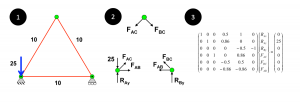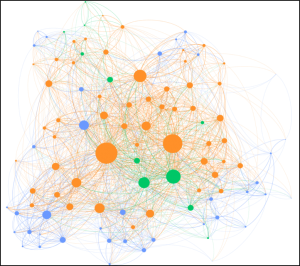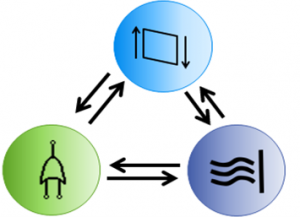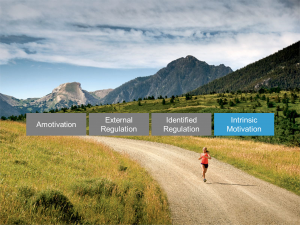A data-driven approach to teaching students SQL and databases
Databases are pervasive, supporting everything from e-commerce to medical records to education. Unfortunately, we know almost nothing about how students learn to write SQL code or use databases. In this project, we are using a mixture of data analytics and qualitative interviews to develop a better understanding of how students learn SQL.
Investigation Team
PI: Geoffrey Herman (Computer Science)
Co-PI: Abdu Alawini (Computer Science)
Grad Students: Morgan Fong (Computer Science)
Seth Poulsen (Computer Science)
Supporting students’ cognition in computing with better diagrams
Visual representations have a powerful affect on how students first understand how concepts are organized in a discipline and later on how they are able to retrieve that knowledge during problem solving. At the same time, students’ conceptual knowledge affects what they are able to see or what they find to be important in visual representations. In this project, we are studying how the design of visualizations of computing concepts such as linked lists and caches affects how students learn these difficult concepts.
Investigation Team
PI: Geoffrey Herman (Computer Science)
Co-PI: Carl Evans (Computer Science
Grad Students: Morgan Fong (Computer Science)
Seth Poulsen (Computer Science)
Why are caches hard to learn?
An understanding of how caches work is vital to creating high performance code. In this project, we are studying why students struggle to learn caches and at what point their knowledge fails.
Investigation Team
PI: Geoffrey Herman (Computer Science)
Grad Students: Suleman Mahmood (Computer Science)
Studying Students’ Cognition in Computing Contexts with Eye Tracking
Visual representations have a powerful affect on how students first understand how concepts are organized in a discipline and later on how they are able to retrieve that knowledge during problem solving. At the same time, students’ conceptual knowledge affects what they are able to see or what they find to be important in visual representations. In this research project, we are using eye tracking, qualitative interviews, and pedagogical intervention studies to explore the effects of notational standards in computing on how students learn computing concepts. We are particularly interested in whether small changes to our notational practices can help students more quickly and robustly learn computing concepts.
Investigation Team
PI: Geoffrey Herman (Computer Science)
Grad Students: Sofia Meyers (Computer Science)
Sketch Tools for Engineering Problem Solving
The ability to communicate through graphical means such as sketching is central to engineering education and practice, yet little is known about how, why, and when students use engineering sketches or how they learn to use them. Through this project, we will study students’ representational fluency by exploring the similarities and distinctions between experts and novices in their use and production of engineering sketches during problem solving. We will study sketching in two domains: digital logic and trusses. These domains use complementary styles of sketches as digital logic sketches are visually distinct from real-world implementations, and trusses are rely on facsimiles of real-world objects. The use of complementary domains will provide richer observations that can inform the future development of theory and pedagogical tools.
 We are currently conducting think-aloud interviews with both content experts and novices as they solve engineering problems. We are capturing these interviews by having interviewees sketch on tablets and recording their interactions with the screen. The long-term goal of the project is to collect real-time sketching data that can we can datamine to provide deeper insights into how novices and experts produce and use engineering sketches.
We are currently conducting think-aloud interviews with both content experts and novices as they solve engineering problems. We are capturing these interviews by having interviewees sketch on tablets and recording their interactions with the screen. The long-term goal of the project is to collect real-time sketching data that can we can datamine to provide deeper insights into how novices and experts produce and use engineering sketches.
Investigation Team
PI: Geoffrey Herman (Illinois Foundry for Innovation in Engineering Education
Co-PI: Joshua Peschel (Civil and Environmental Engineering)
Grad Students: Nicole Johnson-Glauch (Materials Science and Engineering)
Brian Faulkner (Electrical and Computer Engineering)
NSF Proposal text
NSF funded project – Grant number: DUE 1429348
Intellectual Merit: The intellectual merit of this project is established by its basis on a rich tradition in the study of expert-novice differences. This project is particularly informed by prior research on how novices and experts comprehend and use static images in their reasoning. We will expand on this research, filling a gap in our understanding, by studying how novices and experts produce and respond to their own sketches.
Additionally, we are building on existing techniques for digital sketch recognition. We are extending the usefulness of these techniques through established methods from educational data
mining. By aligning educational data mining with qualitative analysis of sketching in a new form of mixed methods, we are advancing the state of the art in educational research methods.
Broader Impact: The broader impacts of this project will be seen through three different facets. First, our project will provide new avenues for richer credentialing in engineering education.
Sketching (or graphical communication) is a core component of the most engineering analysis and design processes, but there are not established, validated, and/or efficient methods for assessment
for learners. Our project will provide the first research-based steps for achieving these methods. Second, this project will enhance and maximize the effectiveness of pedagogies and their tools. Connecting data mining with research on expert-novice differences will provide new avenues for providing automated feedback to instructors and students on the quality of student learning. Third, our project will produce a large database of sketching, simultaneously building a developer/user community that can use that database. Our research will directly impact the research careers and tool development of our colleagues.
Getting Engineers to Think Across Disciplines
Project Overview
NSF Funded – Grant Number: EEC 1129447
The goal of this project was to study students’ conceptual understanding as it manifests across the engineering disciplines. Generally, conceptual change studies focus on students conceptual understanding within a single discipline. This focus is understandable, since it is difficult to possess sufficient expertise in multiple disciplines to understand the nuances of students’ conceptual understanding, yet this type of focus limits the generalizability of this work and its ability to find domain independent findings. Ultimately, these single-discipline studies focus on what misconceptions students have instead of why students have those misconceptions.
This project is analyzing data from four engineering topics: strength of materials, digital logic, fluid mechanics, and signalized intersections. Two of these topics focus on conceptual understanding of engineering that is conducted within the physical sciences, while the other two focus on conceptual understanding of engineering that is conducted within socially-constructed sciences (e.g., Men created roads and traffic lights whose rules and norms are socially constructed). This project has led to new empirical evidence about domain-general challenges in learning engineering concepts.
Investigation Team
Ruth Streveler (Purdue University)
Shane Brown (Oregon State University)
Holly Matusovich (Virginia Tech University)
Olusola Adesope (Washington State University)
Devlin Montfort (Oregon State University)
Geoffrey Herman (University of Illinois)
Dana Denick (Purdue University)
Projects
Innovation in Engineering and STEM Education |
How Students Learn Engineering and Computer Science |
Designing Educational Assessment Tools |
Intrinsic Motivation Course Conversions |